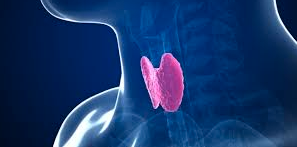Investigators have found that HHV-6 DNA and mRNA are more prevalent in the autoimmune thyroiditis (AIT) biopsies than in controls, according to investigators in Latvia. DNA was found in the thyroid tissue of 98% of AIT patients compared to 77% of controls (p=0.0058). Moreover, HHV-6 U79/80 mRNA was found in 41% of AIT thyroid tissue samples but only 6% of control tissues (p=0.0118). In all patients with active infection, HHV-6 antigens were present in thyroid gland cells, specifically in intrafollicular cellular clusters and in the follicle wall containing thyrocytes.
45 AIT patients with auto-antibodies against TPO, TG, and THSr were recruited following total thyroidectomy as a consequence of nodular goiter. 37% of the patients were diagnosed with Hashimoto’s thyroiditis. For thyroid tissue comparison, 30 deceased subjects without thyroid pathologies were chosen. It is worth noting that apoptosis has been shown to initiate HHV-6 replication, so reactivation after death is a possibility to consider when using autopsy samples. In addition to higher viral prevalence and activity among AIT patients, the median viral load was shown to be higher in patients with active infection as compared to those with latent infection. Though not significant, the median viral load was also shown to be higher in tissue from the group with HHV-6 latent infection than in the control group.
HHV-6A has previously been found in thyroid tissue from patients with Hashimoto’s thyroiditis (HT) (Caselli 2012). While HHV-6 was found significantly more frequently in HT patients than in controls, and active transcription was observed in thyrocytes from HT patients, the variant found in all of the tissue samples was HHV-6A. In the present study, only HHV-6B was found.
The high viral activity rate in the thyroid suggests that HHV-6B may promote AIT development through direct damage to thyroid gland tissue and the presentation of damaged thyrocytes to immunocompetent cells, thereby provoking an autoimmune reaction. The investigators also suggest that immunomodulation via expression of HHV-6 U12 and U51 might be involved in the development of thyroid dysfunction. Rizzo et al. observed increased natural killer (NK) cell activity against HHV-6 infected thyrocytes and proposed that the inflammatory cytokines produced by activated NK cells may contribute to HT development (Rizzo 2016).
Further studies may reveal new treatment options targeting persistent HHV-6 infection in the thyroid.
Read the full paper here: Sultanova 2016

